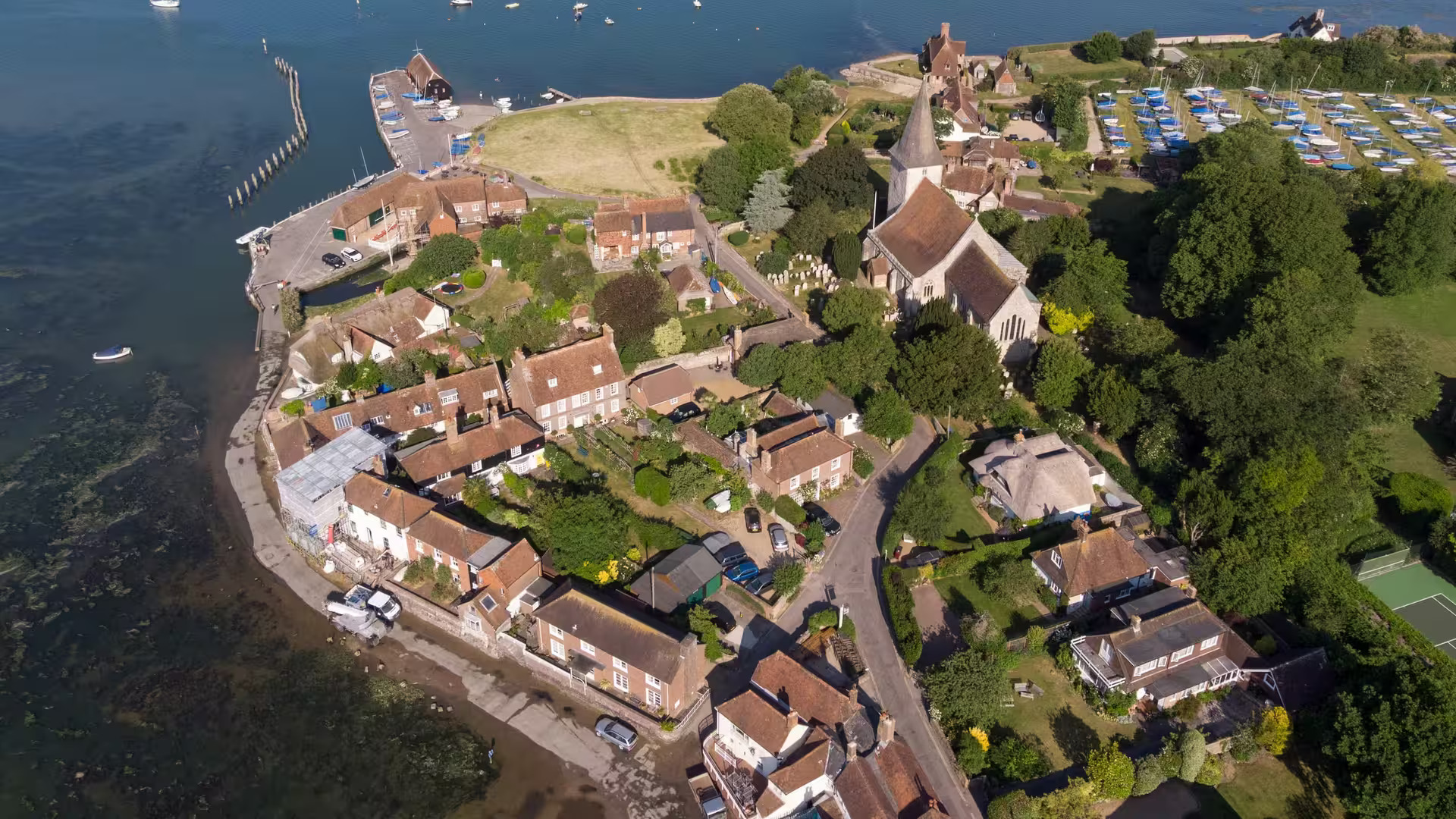
British archaeologists have located the remains of an 11th-century royal residence in Bosham, West Sussex—almost certainly that of King Harold II, the last Anglo-Saxon ruler of England. This discovery offers fresh insight into the events leading up to the Norman Conquest.
For centuries, the Bayeux Tapestry has fascinated historians and researchers. This medieval masterpiece, around 70 metres long, vividly depicts the confrontation between Harold Godwinson, later Harold II, and William the Conqueror for the English throne in 1066.
Among the many scenes depicted is a sequence showing Harold in the presence of his court, in a location that remained a mystery. Thanks to meticulous excavations carried out in Bosham, British archaeologists believe they have finally identified one of the last known landmarks of the Anglo-Saxon king.
Passionate about archeology? You might enjoy these articles:
- Archaeologists have just uncovered a luxury spa complex in Pompeii, perfectly preserved under the ash
- The most incredible archaeological sites to visit in mainland Greece
- 7 surprising archaeological sites to discover in Portugal once in your life
- 10 museums to visit in Europe if you love archaeology
Bosham, a key location in the history of Harold II
century. Tied to the Godwin dynasty, a powerful family during the reign of Edward the Confessor, this location likely served as a royal residence and a political base for Harold before his ascent to the throne.
It is in this region that the future king is believed to have stayed before setting off for Normandy in 1064, in a controversial episode where he allegedly swore an oath to William the Conqueror. A forced and later betrayed allegiance, which, two years later, would serve as justification for the Norman invasion. The discovery of remains in Bosham supports the idea that this village played a crucial role in the fate of the last Anglo-Saxon king.
Medieval latrines as clues
It was unexpected elements that allowed researchers to confirm the site’s importance: medieval latrines, buried beneath several layers of ground. Far from being trivial, these remains provide valuable evidence of a high-status residential structure. Indeed, the existence of well-equipped sanitary facilities suggests a building used by nobles or military personnel, supporting the likelihood that a king and his relatives resided there.
century, a period when Harold was solidifying his influence over the Kingdom of England.
Harold vs. William: the final battle of a fallen King
The year 1066 sealed the fate of Harold II and Anglo-Saxon England. After defeating the Viking forces in September, the English king embarked on an exhausting march south to confront William’s invasion. On 14 October, the Battle of Hastings ended in disaster: the well-organised and disciplined Norman troops triumphed after a day of intense fighting.
Harold was killed on the battlefield, paving the way for a new dynasty that would transform England. The exact location of his burial remains uncertain, but some theories suggest he was laid to rest in Bosham, in the church were his father was buried.
This archaeological discovery sheds new light on the final moments of Anglo-Saxon England before the Norman Conquest, bringing us one step closer to uncovering the truth hidden beneath centuries of legend.



0 Komentar